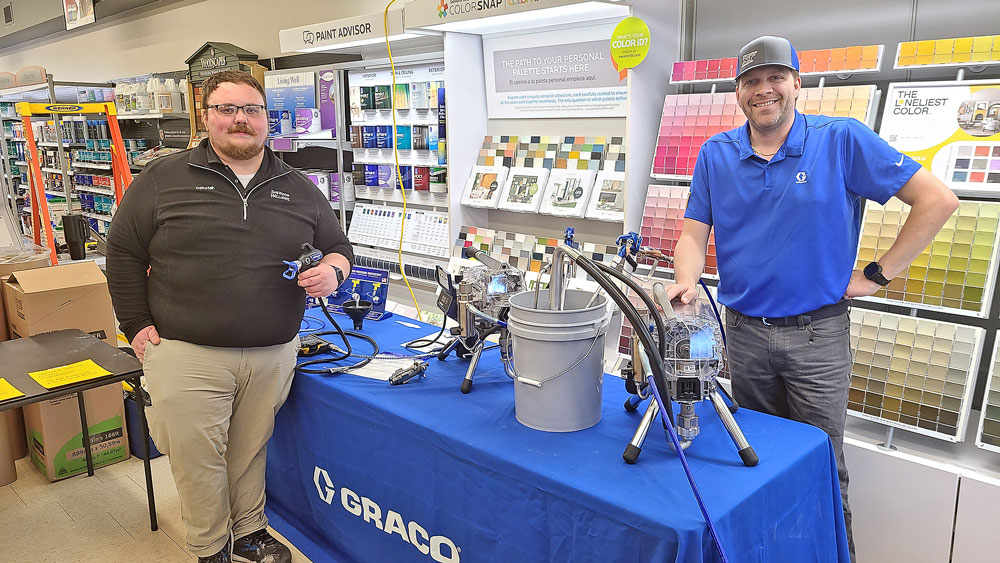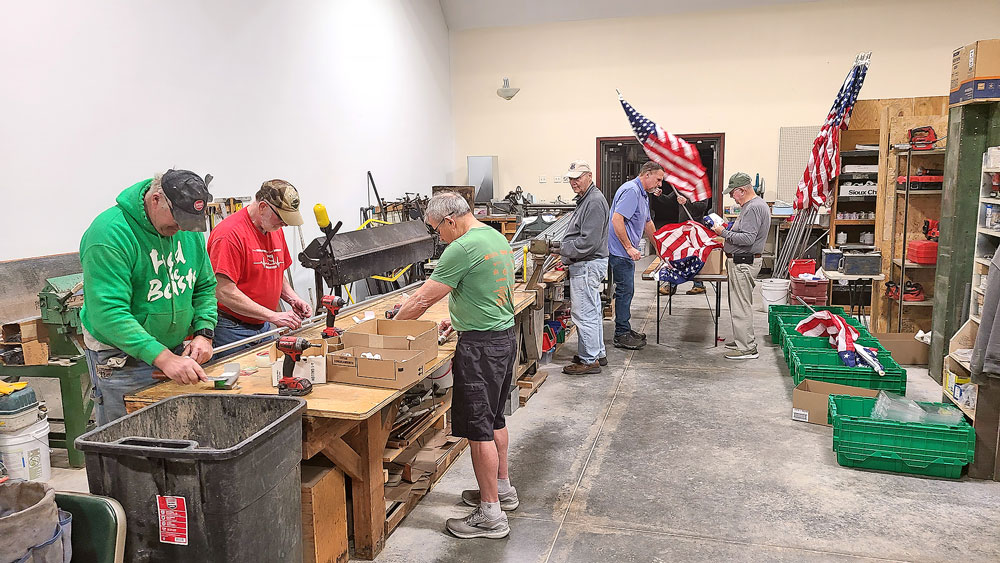WEB LINK: Washington Elementary’s sitting duck
Mama mallard chooses school courtyard for nest site

Photo by Amie Johansen
By Amie Johansen
amie@charlescitypress.com
Check out the live link here.
In the center of Washington Elementary school is a cozy courtyard. Roughly two and a half weeks ago, a mother mallard selected this courtyard to make a nest.
This mother duck’s decision to live in Washington’s courtyard is providing the preschool through second grade students with a unique experience. In an effort to observe the ducklings hatch, a ‘duck-cam’ has been installed. This will allow the school to share their wildlife watching experience at www.charlescityschools.org.
“(Students) are observing and are really excited to see them hatch,” Washington Principal Kara Shannon said.
She notices students walking more slowly through the hallways, peeping through the courtyard windows hoping to catch a glimpse of the mother duck.
Once the hen begins incubation, the eggs will begin to hatch within a month, said Orrin Jones, a waterfowl research biologist with the Iowa Department of Natural Resources.
“Form that stage, it will probably take about 24 days,” he said. “The eggs will begin to hatch and ducklings will emerge within hours of each other.”
The mother duck had a few decisions to make before settling among Washington Elementary.
“There’s various stages of nesting,” Jones said. “The first is nest initiation, where the hen will select a site.”
According to Jones, the hen will visit the site assessing for dangers and make a nest bowl. Once selecting a location, the hen will begin laying her eggs.
“She’ll probably lay eight to 12 eggs, more or less one a day,” Jones said. “At that time she’ll visit the nest for a relatively brief time, lay an egg and then leave.”
This second stage provided an opportunity to see the eggs.
“There are eight (eggs),” Shannon said. “The preschool got to go out and count them.”
Although Washington’s courtyard is completely closed off to any land predators, it is not an ideal location.
“She doesn’t have a food (or water) source,” Shannon said.
Wanting to give the mother-to-be a helping hand, custodians Erik Gordon and Mark Davidson set up a kiddie pool with a ramp and purchased a bag of duck feed from a hardware store.
According to Jones, a wild duck’s diet typically consists of pond invertebrates.
“I don’t know if she’ll make use of that artificial diet or not,” he said. “She’ll probably fly to a wetland and grab what she needs.”
However, not having direct access to a large food source should not be a concern, Jones said. Before laying eggs, hens build up a sort of reserve so as to be able to build a nest, lay eggs, fast during the third stage –– the incubation process –– and yet maintain their body composition.
“Really she is kind of fasting,” he said. “If she needs to get off (the nest), she’ll go. That’s a very natural part of the process.”








Social Share